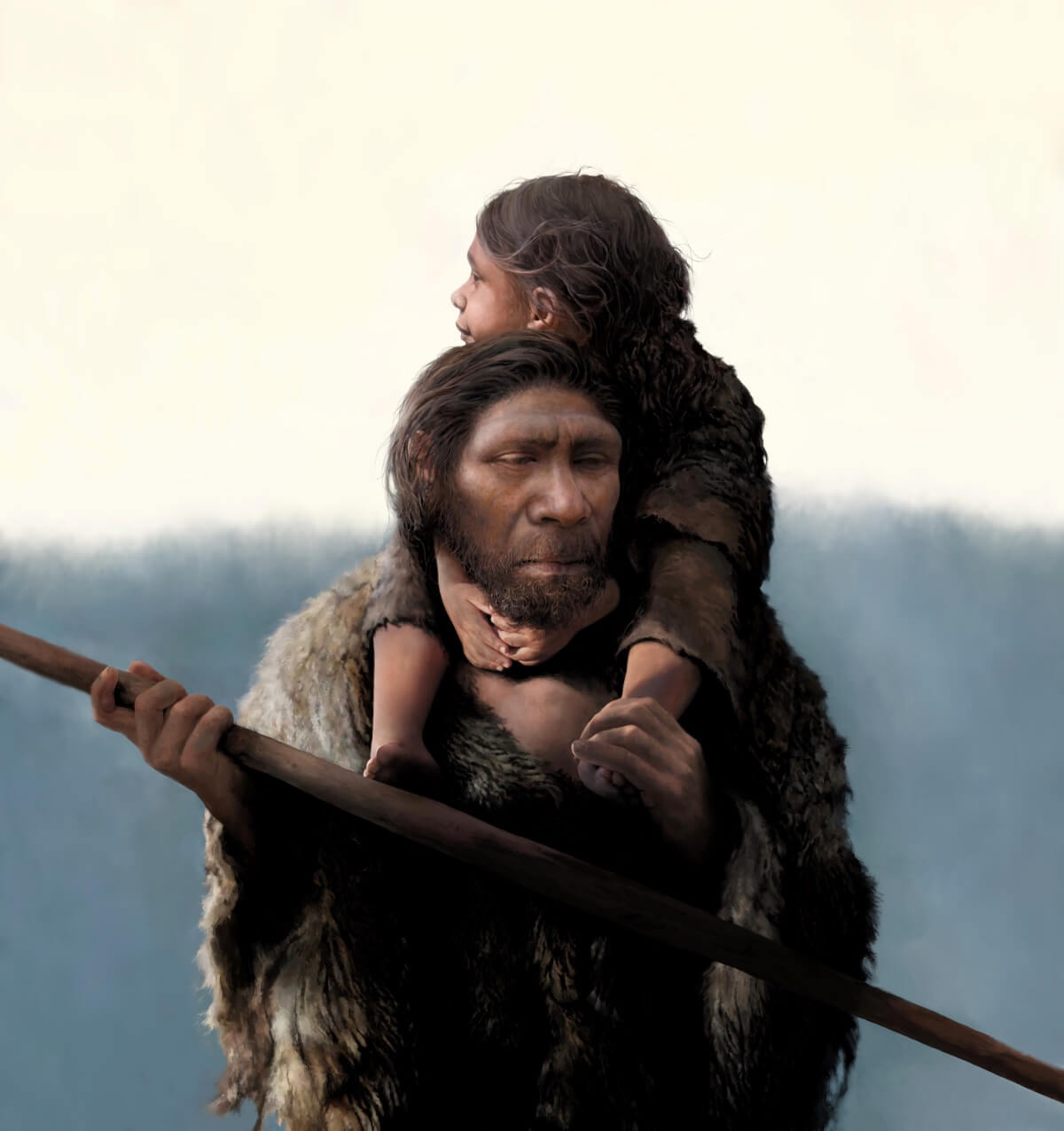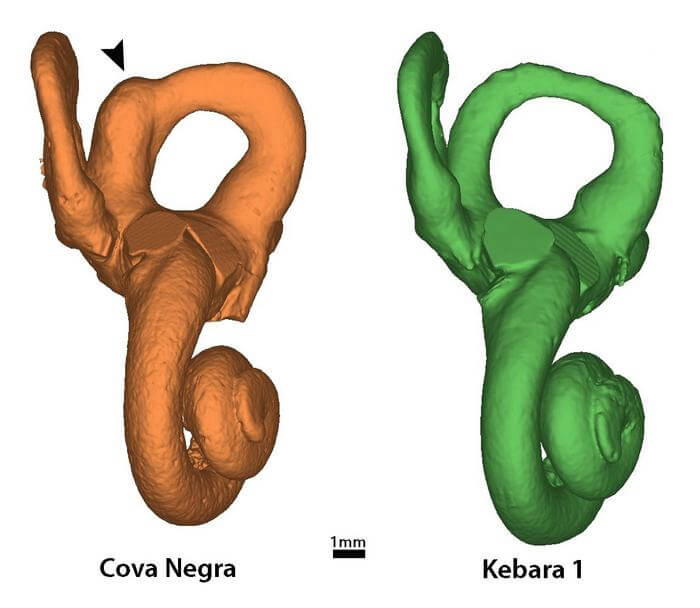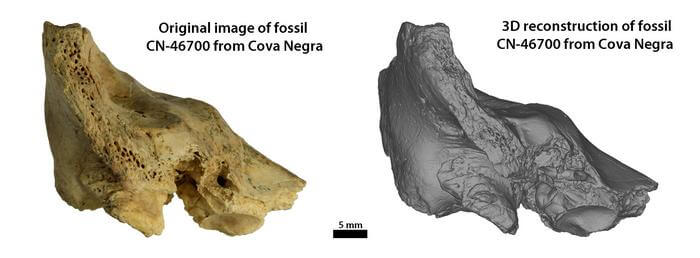
A Neanderthal father and his daughter. (Credit: Tom Bjorklund)
BINGHAMTON, N.Y. — The Neanderthals, often painted as brutish cave-dwellers, may have possessed a tender side that modern humans never knew about — until now. Researchers in Spain have not only unearthed the first suspected case of Down syndrome in a Neanderthal child, but they have also found evidence that our ancient cousins provided compassionate care for this youngster.
Anthropologists from the University of Alcalá and the University of Valencia in Spain have been studying the skeletal remains of a Neanderthal child, whom they named “Tina.” They found her remains at Cova Negra, a cave famous for yielding important Neanderthal discoveries. This new discovery published in Science Advances challenges our understanding of prehistoric human behavior, showing that Neanderthals were capable of complex emotional and social care.
“The excavations at Cova Negra have been key to understanding the way of life of the Neandertals along the Mediterranean coast of the Iberian Peninsula and have allowed us to define the occupations of the settlement: of short temporal duration and with a small number of individuals, alternating with the presence of carnivores,” explains University of Valencia Professor of Prehistory Valentín Villaverde in a media release.
“What was not known until now was any case of an individual who had received help, even if they could not return the favor, which would prove the existence of true altruism among Neandertals. That is precisely what the discovery of ‘Tina' means,” adds Mercedes Conde-Valverde, a professor at the University of Alcalá and lead author of the study.
Methodology: Digging into the Past
The research team conducted a detailed analysis of the child's remains using advanced micro-computed tomography (μCT). This allowed them to create a 3D model of the child's inner ear, which showed anomalies consistent with what we know about Down syndrome.
By comparing these features with those of both modern humans and other Neanderthals, the team painted a clearer picture of the child's condition. Taxonomic analysis using characteristics of the inner ear distinctively indicated that the child belonged to the Neanderthal species.

Key Results: Discovering a Clear Diagnosis
The child exhibited several specific deformities in the inner ear that significantly impacted hearing and balance, consistent with symptoms of Down syndrome. Notably, the study confirmed an enlarged vestibular aqueduct and dysplasia of the lateral semicircular canal — conditions that would have caused severe hearing loss and balance disorders. These findings are critical as they suggest that Tina would have been incredibly dependent on others for survival, highlighting the caregiving aspect of Neanderthal society.
“The results have significant implications for our understanding of Neandertal behavior,” notes Binghamton University Professor of Anthropology Rolf Quam.

Discussion and Takeaways
The implications of these findings extend far beyond the medical symptoms. It likely took extensive care from the community, not just Tina's mother, for this child to survive into early childhood. This level of care for someone with severe disabilities reveals a social structure among Neanderthals that scientists never knew existed.
The discovery also sheds light on the broader behaviors of early humans, suggesting that the roots of empathy, compassion, and communal care might run deeper in our evolutionary history than previously thought. This Neanderthal child's story adds a profound dimension to our understanding of how our ancient human cousins interacted with the vulnerable among them.










